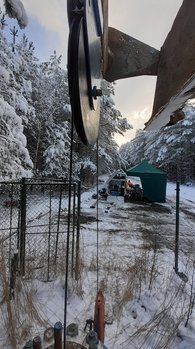Background
The subsurface relevant for geoenergetic applications is not directly accessible. Information on its geological structure and properties must therefore be collected, analyzed, and comprehensively characterized using site-specific exploration concepts. These concepts are based on the formation and geological development of the considered units and utilize existing legacy data as well as previous exploration results. Improved assessments of geological distribution and characteristics are achieved through optimized geophysical exploration methods and targeted exploratory drilling. These results help assess geological risks and integrate them into planning.
The characterization of the subsurface takes place on different scales: from the microscale (based on rock sample analyses) to the intermediate borehole scale (e.g., geophysical borehole measurements) and the field scale (field experiments such as hydraulic tests). After successful implementation, operational data and adapted system monitoring allow for further comparison with model data. Data strategies are developed to version acquired insights and make them available for future analyses. This enables the transfer of site-specific findings to comparable locations, improving the geoenergetic site and project development.
Scientific key questions
- How can geological exploration methods be optimized for geoenergy applications?
- Which properties and processes are key indicators for the respective geoenergetic applications and should be considered in a site-specific exploration?
- How should subsurface models be parameterized considering the model scale in order to honour the respective model domain?
- How can subsurface data, exploration data, and monitoring data be made available and used?
Related projects
- Reallabor GeoSpeicher Berlin | Integrating a high-temperature aquifer thermal energy storage into a district heating network
- Geothermal Potsdam | Sustainable Geothermal Site Development in Potsdam
- ThermoBase | Thermische Grundlagendaten für die Bewertung des Temperaturfeldes sedimentärer Teilgebiete im Standortauswahlverfahren
- CHENILLE | Coupled beHavior undErstaNdIng of fauLts : from the Laboratory to the fiEld
- WHFD | World Heat Flow Database Project
- GEOZeit | Weiterentwicklung der deutschen Energieversorgung durch innovative Geo-Technologien
- Regional heat flow, temperatures and geothermal potential in the North German Basin



